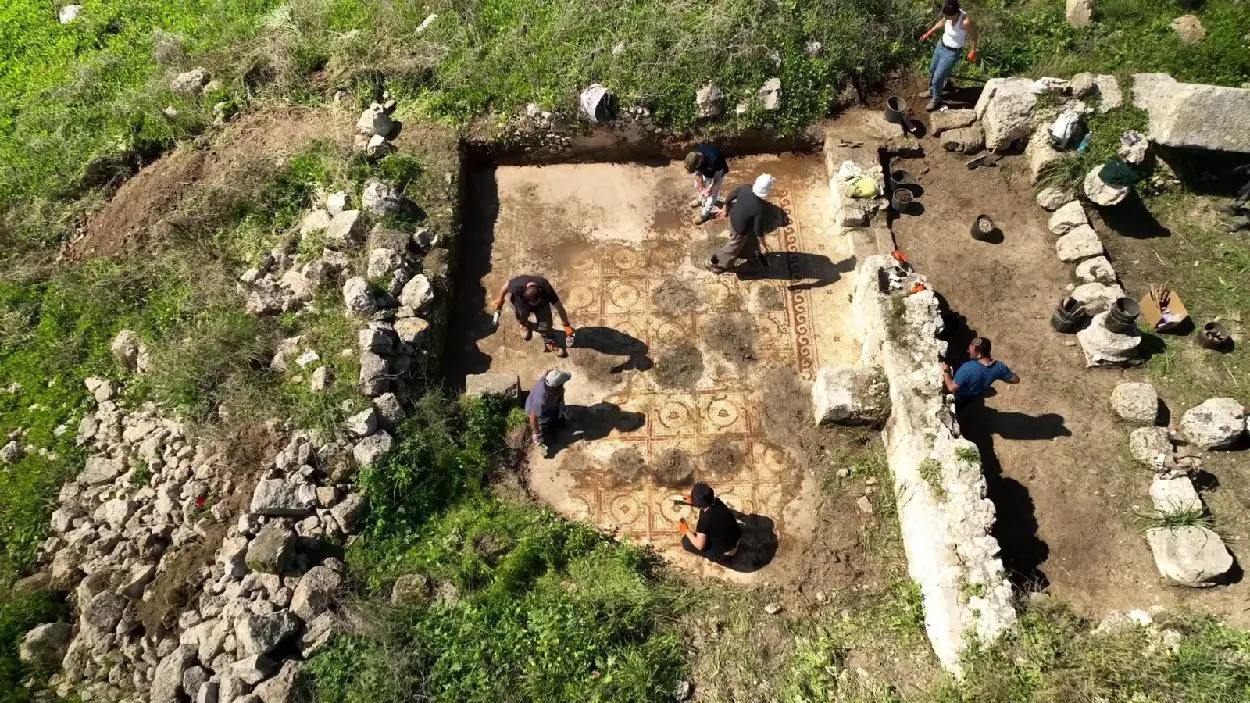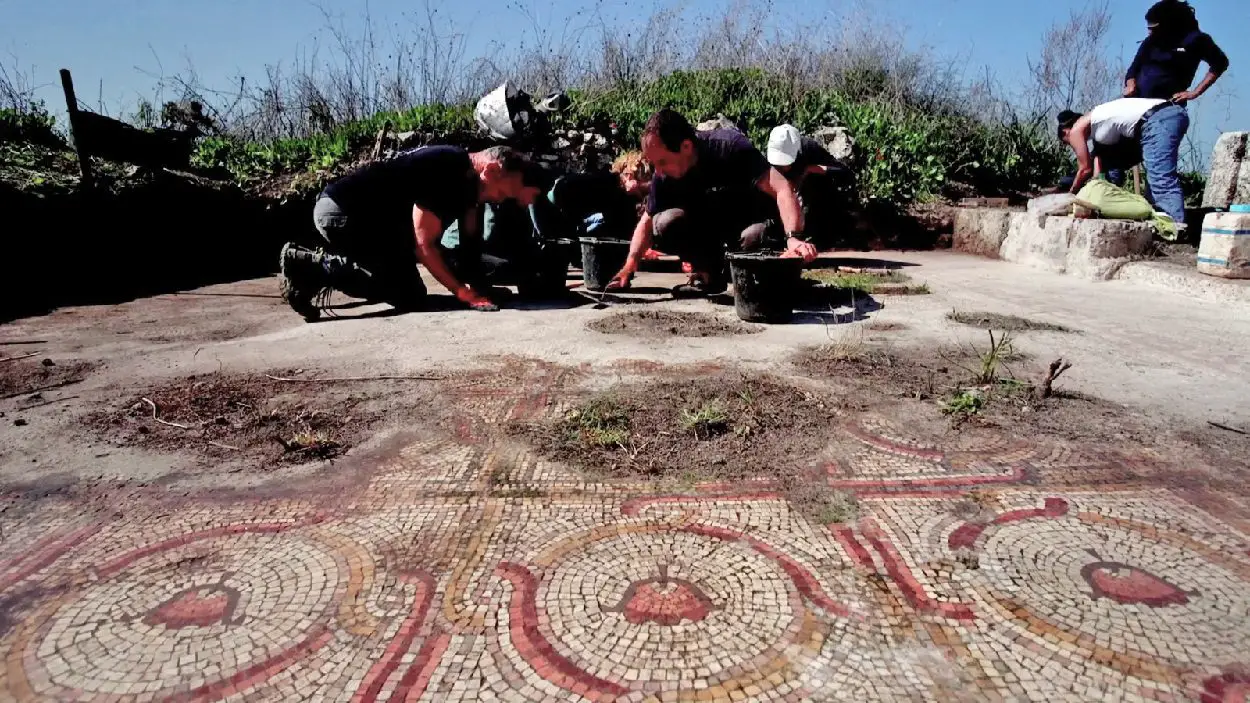Archaeologists have excavated a Byzantine mosaic, decorated with floral designs in the Shoham Industrial Zone, located in the Shephelah region of Israel.
The excavations are part of a community project to restore the archaeological site of Horvat El-Bira, an ancient settlement which was covered over by development works during the late 20th century. The mosaic was part of an ancient church first discovered during the 1980’s, but was subsequently reburied to preserve the remains.
During the Roman period, the site was the location of a rural villa complex and several agricultural related buildings.
By the Byzantine period, a church was added that supported a network of “refreshing stations” alongside a major ancient highway connecting the coastal regions with the Shephelah lowlands. These stations were positioned every few miles, serving as places of rest, recovery, and worship.

Archaeologists from the Israel Antiquities Authority, working in conjunction with the Shoham Local Council and volunteers, have now re-excavated the mosaic to reveal a series of floral patterns that are centred within a circular and square design.
Yair Amitzur, Director of the Israel Antiquities Authority Central Region Education Department, said: “When we first came to the site, the mosaic was covered over with earth and weeds. Over the last month we have been uncovering and cleaning up the site together with the local community. We are working here amongst a carpet of flowering anemones. One can just imagine that the artist of the flower-adorned mosaic was inspired by the surroundings.”
Header Image Credit : Israel Antiquities Authority





